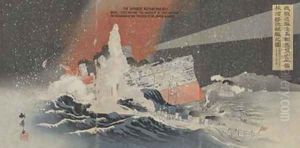Kokyo Paintings
Tanaka Kōkyō, born in 1880 in Ibaraki Prefecture, Japan, was a distinguished Japanese painter known for his significant contributions to the nihonga style, a term used to describe Japanese paintings made in accordance with traditional techniques and aesthetics. Growing up in a period that witnessed the rapid modernization of Japan during the Meiji era, Kōkyō was deeply influenced by the nation's efforts to balance Western innovations with the preservation of Japanese cultural heritage. This duality is reflected in his works, which often harmonize traditional Japanese subjects with modern sensibilities.
Kōkyō received his artistic training at the Tokyo School of Fine Arts, where he studied under the tutelage of Hashimoto Gahō, a master of the nihonga style. His education under such a prestigious mentor equipped him with a profound understanding of classical Japanese painting techniques, as well as the ability to infuse his works with a fresh perspective that resonated with contemporary audiences. Throughout his career, Kōkyō dedicated himself to the exploration of traditional Japanese themes, such as landscapes, historical events, and classical literature, rendering them with a meticulous attention to detail and a rich palette that celebrated the beauty of the natural world.
His contributions to the art world were recognized with numerous awards and honors, and he played a vital role in the establishment of the Japan Art Institute (Nihon Bijutsuin), which aimed to promote the nihonga style amidst the Westernization of Japanese art. Through his involvement with the Institute, Kōkyō sought to foster a new generation of artists who would continue the tradition of Japanese painting, ensuring its survival and relevance in a rapidly changing society.
Kōkyō's legacy is preserved in his body of work, which continues to be celebrated for its elegance and adherence to the spirit of Japanese aesthetics. His paintings, characterized by their serene beauty and subtle expression of the Japanese appreciation for nature, have left an indelible mark on the world of nihonga. Tanaka Kōkyō passed away in 1945, but his contributions to Japanese art have endured, inspiring both contemporary artists and art lovers to this day.
